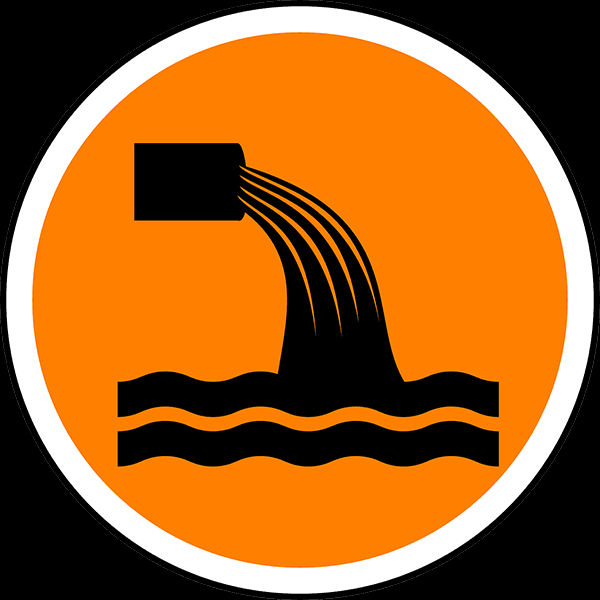Indicators on Reclaim Waste You Should Know
Indicators on Reclaim Waste You Should Know
Blog Article
Not known Incorrect Statements About Reclaim Waste
Table of ContentsThe Only Guide for Reclaim WasteThe 30-Second Trick For Reclaim WasteHow Reclaim Waste can Save You Time, Stress, and Money.Unknown Facts About Reclaim WasteSome Known Facts About Reclaim Waste.
Check out the types, occurrences, and kinds of liquid waste. Residential sewer waste refers to the waste and items from a property septic container. This kind of waste is produced by people in residences, institutions, and other buildings. This only includes septic storage tanks that have a drain area. The proper monitoring and disposal of domestic sewage waste call for fluid waste to be transferred to a sewage treatment plant where the appropriate approaches and tools are related to purify and deal with waste.
Commercial waste usually consists of possible dangers, such as flammable products or a combination of liquid and solid waste products, and requires a more sophisticated and detailed disposal procedure. The disposal of commercial waste typically involves the filtration of waste before transport to make certain risk-free and correct disposal. Industrial waste is produced from results and drainage of industrial procedures and production.
This kind of waste can not use the very same sewage management transport or procedures as septic or commercial liquids. The hazardous waste monitoring procedure needs the evaluation and screening of fluid waste prior to it undertakes the disposal procedure (liquid waste removal melbourne). Drainage waste is the fluid waste that comes from overflow and excess stormwater in extremely inhabited locations or cities
Overflow waste can cause contamination and flooding if not dealt with properly. Find out more regarding drain cleaning and waste monitoring. Ensuring proper waste management can stop calamities and reduce environmental damage. Both individuals in domestic settings and experts in business or production markets can gain from comprehending the processes and policies of liquid waste monitoring.
A Biased View of Reclaim Waste
Contact PROS Solutions today to learn more about our waste management and disposal solutions and the appropriate means to look after the fluid waste you generate.
(https://blogfreely.net/reclaimwaste1/yc311a58b1)This so-called 'wastewater' is not only a crucial source but, after therapy, will be released to our land, waterways or the ocean. Used water from commodes, showers, baths, kitchen sinks, laundries and commercial procedures is known as wastewater.

water utilized to cool down equipment or tidy plant and tools). Stormwater, a form of wastewater, is runoff that moves from agricultural and metropolitan locations such as roof coverings, parks, gardens, roads, courses and gutters into stormwater drains pipes, after rainfall. Stormwater streams untreated directly to local creeks or rivers, ultimately getting to the sea.
Everything about Reclaim Waste
In Queensland, most wastewater is dealt with at sewage therapy plants. Wastewater is moved from domestic or industrial websites through a system of sewers and pump terminals, understood as sewage reticulation, to a sewage therapy plant.
The Division of Natural Resources recommends neighborhood governments about handling, operating click site and preserving sewage systems and therapy plants. In unsewered areas, city governments might call for owners to set up specific or family sewage therapy systems to treat domestic wastewater from toilets, kitchens, washrooms and washings. The Department of Natural Resources authorizes the usage of house systems when they are proven to be reliable.
The majority of stormwater receives no therapy. In some brand-new subdivisions, therapy of some stormwater to get rid of clutter, sand and crushed rock has actually started utilizing gross toxin catches. Wastewater treatment takes place in 4 stages: Eliminates strong matter. Bigger solids, such as plastics and other things wrongly discharged to sewage systems, are eliminated when wastewater is gone through screens.
Wastewater then moves into big containers where solids clear up and are gotten rid of as sludge. Oil and scum are skimmed from the surface area. Utilizes tiny living organisms called micro-organisms to damage down and eliminate remaining liquified wastes and great particles. Micro-organisms and wastes are included in the sludge. Removes nitrogen and phosphorus nutrients that might create algal blooms in our rivers and threaten water life.
An Unbiased View of Reclaim Waste
Nutrient elimination is not offered at all sewage therapy plants since it requires pricey specialized devices. Clear liquid effluent generated after therapy might still consist of disease-causing micro-organisms - liquid waste removal melbourne.

Many wastewater streams into the sewage system. Under the Act, local federal governments provide approvals and permits for eco appropriate activities (Ages) including wastewater launches that could have a regional effect.
How Reclaim Waste can Save You Time, Stress, and Money.
Surveillance provides accurate details concerning water quality and can confirm that licence conditions are being satisfied. The info acquired through tracking offers the basis for making water quality choices.
Report this page